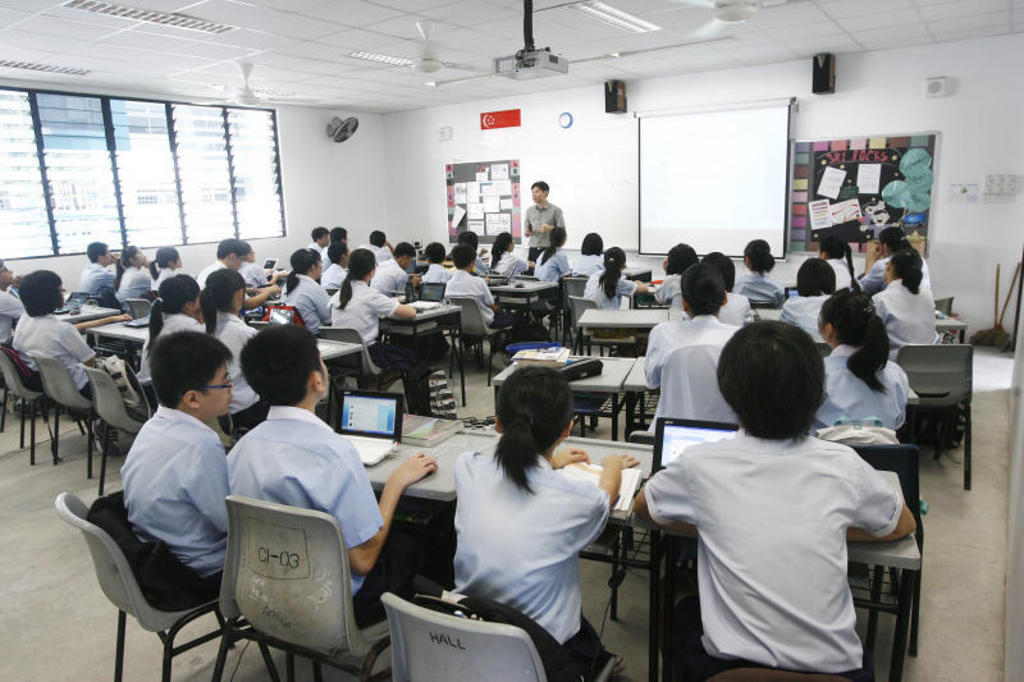MOE’s recent move towards the Subject-Based Banding (SBB) system has received much fanfare. Many have praised it for maximizing students’ learning potential, eliminating academic labels, and promoting greater social mixing within schools. However, the SBB system is not all that effective in addressing deeper issues of social segregation and stratification across schools. This is because SBB has no effect on single-stream schools that offer either the Express or the Normal (Technical)/N(T) stream.
SBB system limited in promoting social mixing where needed
Current statistics show[1] that there is an overrepresentation of high Socio-Economic Status (SES) students in “more prestigious” schools and streams, such as Express-stream schools, and the reverse in “less prestigious” schools and streams, such as N(T)-stream schools.
Within schools that offer multiple streams, the SBB system will provide students with more opportunities to mix with and learn from students of different backgrounds in different subject bands.
However, SBB does not improve social mixing within and across single-stream schools, which tend to be the most homogeneous in terms of student profiles. Such schools are at both ends of the education spectrum – schools that offer only the Express or the N(T) stream.
Students from Express-stream schools, like Integrated Programme (IP)schools, have a greater diversity of academic and non-academic opportunities[2] that help to prepare them for an ‘express’ route to universities. In contrast, N(T)-stream schools like Spectra and Crest Secondary offer vocational training programmes that prepare their students for more ‘technical’ subjects offered in Institutes of Technical Education. As both groups’ educational pathways diverge, their social environments and career opportunities vastly differ, contributing to greater socio-economic segregation between them.
Research has shown that exposure to peers from various academic backgrounds can help students to learn socio-emotional and educational skills, break stereotypes (including students’ internalisations of stereotypes about their own groups), and increase their social capital[3]. Without effective intervention, both groups of students are likely to remain in what Prime Minister Lee Hsien Loong called “self-perpetuating, closed circles”[4], which can consequently entrench inequality and the existence of stereotypes, and thus perpetuate division across socio-economic classes.
How segregation breeds misperception
Regular interactions with others within our own social groups enable us to recognize that our groups are made up of very diverse individuals, who, for example, might have different attitudes, personalities, and opinions from our own. However, limited opportunities to mix with people outside our circles can lead us to perceive those of other groups as homogeneous. NUS sociologist Dr Tan Ern Ser argues that this “out-group homogeneity effect” can translate into misunderstandings and a lack of empathy for people outside one’s ‘social bubbles’, leading to the emergence of distrust between groups, and even class tension[5]. Given that students from single-stream schools (and, often, their parents) tend to have limited opportunities to effectively interact with students from diverse academic streams and socio-economic backgrounds, this situation promotes the generation and spread of misunderstandings about those outside their educational stream.
These misperceptions are reflected in class stereotypes and prejudicial comments we regularly hear, such as ‘elitist rich students’ and ‘lazy racial groups’. Such prejudices are already present, if not widespread, in our society. In fact, they have led directly to criticism of the SBB system: in response to the announcement of the SBB system’s introduction earlier this year, a 48-year-old housewife stated in the Straits Times that she “would prefer if (her) children did not mix with those in Normal stream” because of their “upbringing… mindset and values”[6].
Being a small, multi-cultural and multi-religious nation, we cannot afford to be divided across socio-economic lines. It is thus not acceptable that our education system should create or entrench that division. Schools provide one of the best environments to encourage social mixing among the young and cultivate togetherness among people of different backgrounds. This is because schools introduce our children to a larger number of people than in almost any other setting, and do so in a structured (and mandatory) environment that provides for social learning and interaction. This is crucial to prevent the emergence of a stratified social system – and of its cousin, class tension.
What can single-stream schools do?
A famous sociology study, the “Robbers Cave Experiment”, found that when people work together towards a unified goal, differences are minimized, and positive relations are formed more readily[7]. Therefore, schools should offer programmes that place students in an interactive context where they can perceive themselves as equals, while sharing a common goal that encourages them to collaborate to achieve success.
For a start, schools can form mixed teams to compete in friendly competitions in sports or performing arts, instead of having schools purely compete against one another. Schools can also organize inter-school Values-in-Action programmes for students of different backgrounds to give back to the community together. Such deliberate efforts will help students to overcome natural tendencies to form groups based on convenience, class, or race. The onus is on schools to organize joint programmes to guide social mixing in a way that does not result in greater accentuation of inter-group differences, but helps students to interact with others outside of their educational stream, thereby promoting social integration.
Finally, social change is a slow and hard process. It requires the cooperation of not just schools, but a willingness of parents to change their mindsets too. Yet despite the difficulties, MOE’s bold announcement has showed that there is hope, and reignited the debate on education as a social leveller. The time is ripe for us as a society to address the deeper, systemic inequalities that can divide future generations of Singaporeans – and ensure that we resolve them, to protect Singapore’s cohesion and prosperity for the long term.
[1]https://www.todayonline.com/singapore/singapore-gap-widens-students-sense-belonging-school-tied-socio-economic-status
[2]https://www.childrensociety.org.sg/resources/ck/files/Schools%20and%20Class%20Divide_Research%20Monograph%2011_FINAL_24%20Aug%202016v3.pdf
[3]https://www.ncbi.nlm.nih.gov/pmc/articles/PMC4519981/
[4]https://www.straitstimes.com/politics/elite-must-keep-social-networks-open-or-social-mobility-will-be-frustrated-pm-lee-hsien
[5]https://www.todayonline.com/singapore/big-read-social-stratification-poison-seeping-spores-housing-estates-and-schools
[6]https://www.straitstimes.com/singapore/education/end-of-streaming-how-will-changes-affect-ip-schools
[7]https://www.simplypsychology.org/robbers-cave.html
Image Source: Today Online
